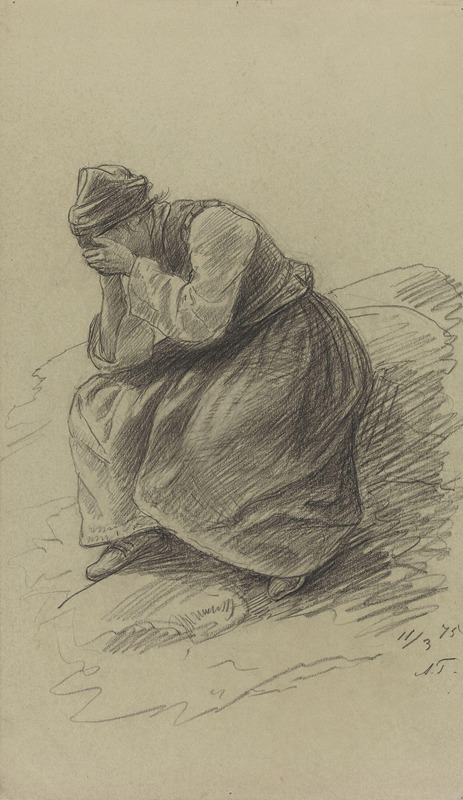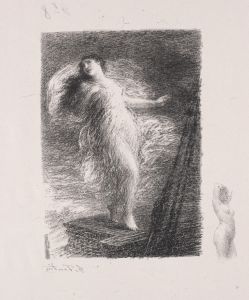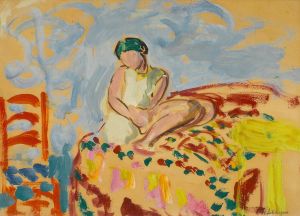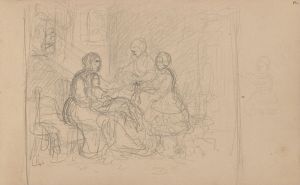
Sittende ung pike med hodet i hendene
A hand-painted replica of Adolph Tidemand’s masterpiece Sittende ung pike med hodet i hendene, meticulously crafted by professional artists to capture the true essence of the original. Each piece is created with museum-quality canvas and rare mineral pigments, carefully painted by experienced artists with delicate brushstrokes and rich, layered colors to perfectly recreate the texture of the original artwork. Unlike machine-printed reproductions, this hand-painted version brings the painting to life, infused with the artist’s emotions and skill in every stroke. Whether for personal collection or home decoration, it instantly elevates the artistic atmosphere of any space.
Adolph Tidemand's painting Sittende ung pike med hodet i hendene (translated as Seated Young Girl with Her Head in Her Hands) is a work by the renowned Norwegian artist, who is best known for his contributions to 19th-century Romanticism and his depictions of Norwegian folk life and culture. This particular painting portrays a young girl seated with her head resting in her hands, evoking a sense of introspection or melancholy. The artwork reflects Tidemand's characteristic attention to detail and his ability to capture human emotion with subtlety and depth.
Adolph Tidemand (1814–1876) was one of Norway's most prominent painters during the 19th century. He studied art in Copenhagen, Düsseldorf, and other European cities, and his works often focused on themes of Norwegian rural life, traditions, and national identity. Tidemand was a central figure in the Düsseldorf School of painting, which emphasized realism, detailed craftsmanship, and often romanticized depictions of everyday life. His works were instrumental in shaping the visual representation of Norwegian culture during a period when the country was seeking to define its national identity.
While Sittende ung pike med hodet i hendene is not among Tidemand's most famous works, it exemplifies his skill in portraying human figures with emotional resonance. The painting is rendered in a realistic style, consistent with the artistic principles of the Düsseldorf School. The subdued tones and the simplicity of the composition draw attention to the subject's emotional state, inviting viewers to reflect on her inner thoughts or feelings.
The exact date of the painting's creation is not widely documented, nor is its current location or ownership. However, it is consistent with Tidemand's broader body of work, which often explored themes of solitude, contemplation, and the human condition. Tidemand's ability to convey complex emotions through his art has earned him a lasting place in Norwegian cultural history.
Due to the limited availability of specific information about this particular painting, further details about its provenance, exhibition history, or critical reception are not readily accessible. However, it remains an example of Tidemand's broader artistic legacy and his contribution to 19th-century European art.


















